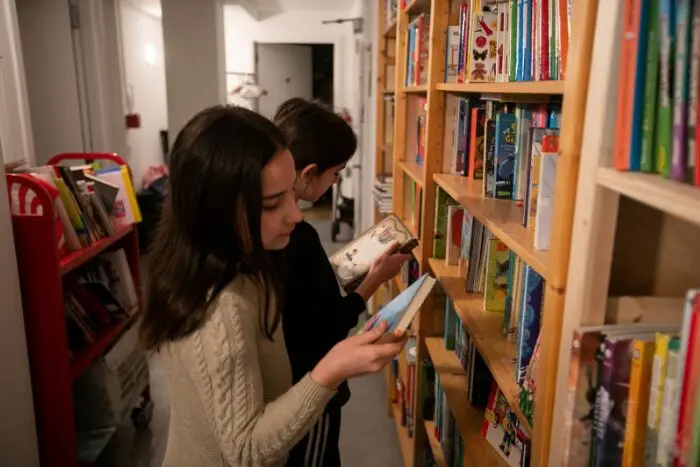How to Support Bilingual Children in Their Language Journey
December 2nd, 2024

Parents play a vital role in nurturing their children’s language skills; however, the journey of raising a bilingual child can be especially challenging. To help parents navigate this complex process, this article will explore effective strategies, engaging activities, and practical tips to support bilingual development and promote long-term success for their children.
Creating a Bilingual Environment at Home
The foundation for a bilingual child’s growth begins at home. By fostering a consistent and immersive bilingual environment, parents can offer their children the exposure needed to learn and maintain two or more languages.
One effective approach is to speak both languages consistently. Families with bilingual children should choose a language strategy that better suits their needs, such as the one-parent-one-language method or prioritizing the minority language at home. Committing to using each language regularly is key, even when it feels challenging.
Surrounding bilingual children with multilingual resources also plays a crucial role in supporting their language acquisition journey. Integrating books, music, movies, and other media in both languages into daily routines provides consistent exposure across various contexts. Family members and caregivers can enhance this experience by using both languages during interactions.
Encouraging bilingual playdates is another great way to help bilingual children practice their language skills in social settings. Connecting with other bilingual families allows kids to use both languages naturally, reinforcing their learning while fostering a sense of community. Additionally, celebrating bilingual milestones, such as a child’s first words in each language or their ability to switch languages effortlessly, can boost their confidence and motivate them to continue on their bilingual journey.
Language Learning Activities for Bilingual Children
Engaging bilingual children in fun and interactive language learning activities is essential for their personal and academic growth. For example, storybook reading can significantly enhance language skills. Reading aloud in both languages with different voices and expressions captures children’s attention and sparks their imagination. Encouraging them to ask questions and make predictions about the story fosters critical thinking and comprehension, allowing them to practice their skills in an engaging manner.
Bilingual pretend play is another effective activity that should be incorporated into every child’s learning journey. When bilingual children engage in imaginative play using two languages, they explore various roles and scenarios, which can significantly boost their fluency and creativity. For instance, setting up a pretend store or restaurant provides a natural context for using relevant vocabulary.
Lastly, labeling household items creates a constant visual reminder of vocabulary and helps bilingual children make connections between words and their meanings. This simple yet effective technique reinforces vocabulary development through everyday interactions.
Bilingual School Enrollment
As bilingual children near preschool and school age, parents might consider enrolling them in a dual-language program, providing a solid foundation for their language development. Bilingual schools create structured environments that ensure continued language exposure, reinforcing language skills and supporting ongoing bilingual development. This consistent practice is vital for building fluency and confidence in both languages.
Moreover, bilingual programs often incorporate cultural elements into their curricula, helping children appreciate diversity. This exposure prepares them to thrive in a multicultural world. Additionally, attending a bilingual school gives bilingual children the chance to interact with peers who share similar experiences, fostering a sense of community and enhancing their social skills.
Conclusion
Nurturing a child’s bilingual development is a rewarding journey that shapes their identity and opens up numerous opportunities. By creating a supportive home environment, engaging in interactive language activities, and exploring educational pathways, parents can lay a strong foundation for their children’s growth. Every bilingual child’s language learning journey is unique, so it’s essential to embrace the process and celebrate the milestones along the way.